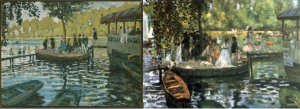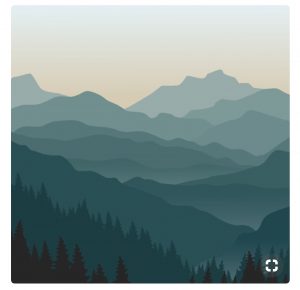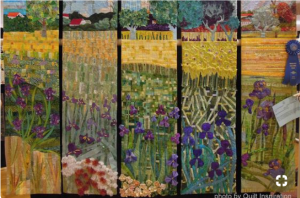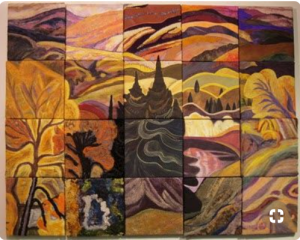So we dove into quilting this week. This is how Wikipedia defines it: “Quilting is the process of sewing two or more layers of fabric together to make a thicker padded material, usually to create a quilt or quilted garment. Typically, quilting is done with three layers: the top fabric or quilt top, batting or insulating material and backing material, but many different styles are adopted.”
Lorrie taught us some key quilting terms for materials and vocabulary:
- batting: A light weight, warm product used between the quilt top and quilt backing, batting is used for quilts, wall hangings, quilted clothing and home décor. Batting is also referred to as Wadding. It is generally made up of cotton, cotton/poly blend, bamboo, wool, bamboo cotton blend. There are two types of batting: with scrim and without scrim.
- binding: Finishing of the quilt. Long, thin fabric strips that are attached to the borders of a quilt.
- block: The unit that is designed for a quilt. Generally there will be many blocks in a quilt. A quilt block can be a single piece of fabric cut with a rotary cutter into a perfect square or a block that has been pieced using many pieces of fabric and sewn together using ¼ inch seam allowance.
- borders: Strips of fabric that frame the edges of the quilt. You can have one or many borders in a quilt top. You may also have borders surrounding your quilt blocks, also known as sashing, or as part of quilt block design.
- cornerstones: name given to a small block that joins the sashing strips together to surround a block or blocks in a quilt top.
- sashing: Strips of fabric sewn around or between blocks of a quilt top. These strips are generally joined together by cornerstone blocks or sashing squares.
These and additional definitions can be found at National Quilters Circle Glossary of Quilting Terms
 This photo includes several examples that Lorrie brought in, as well as some resources and someone’s work in progress in the back.
This photo includes several examples that Lorrie brought in, as well as some resources and someone’s work in progress in the back.





